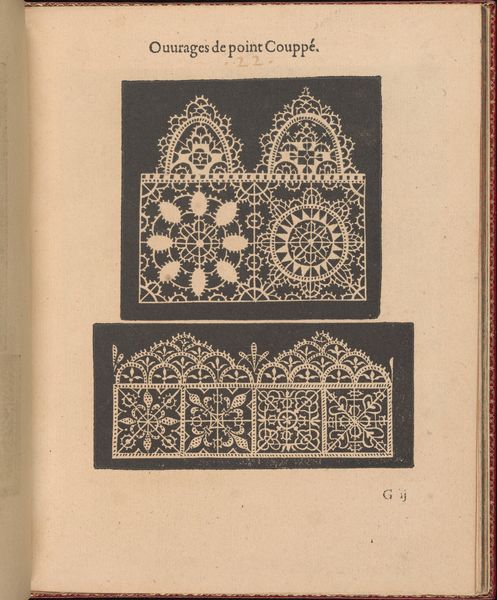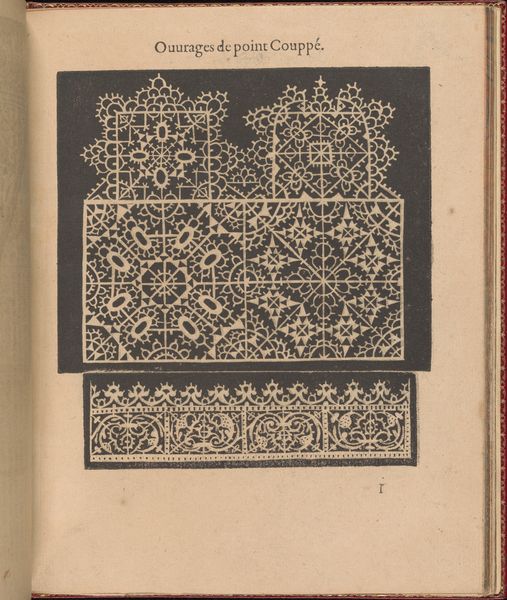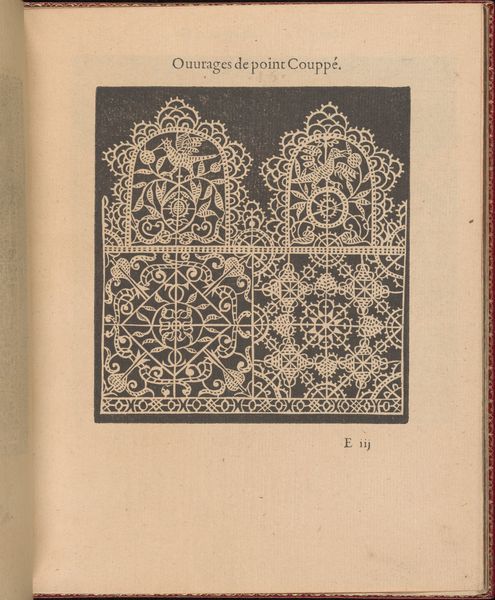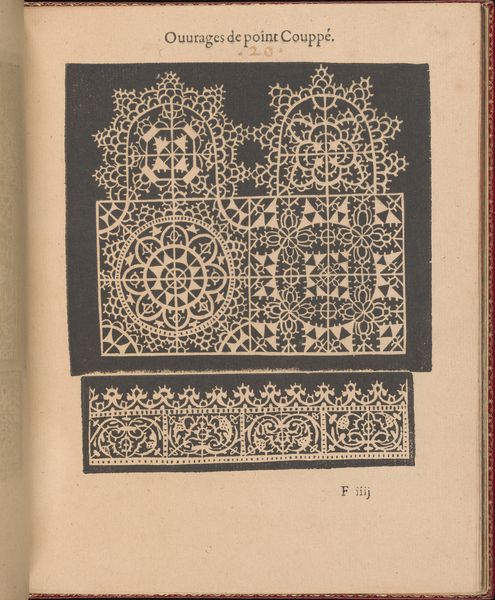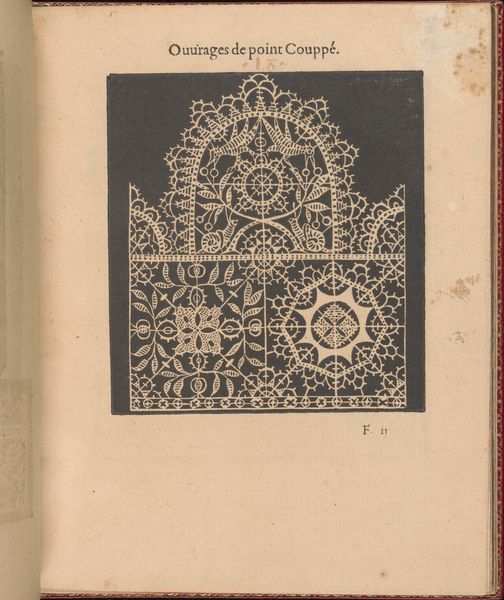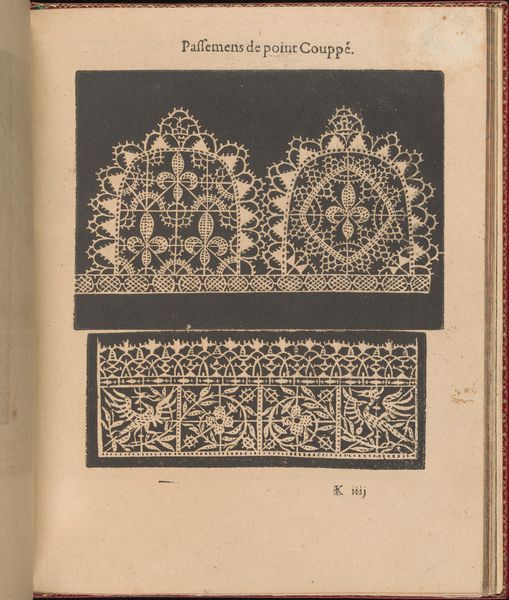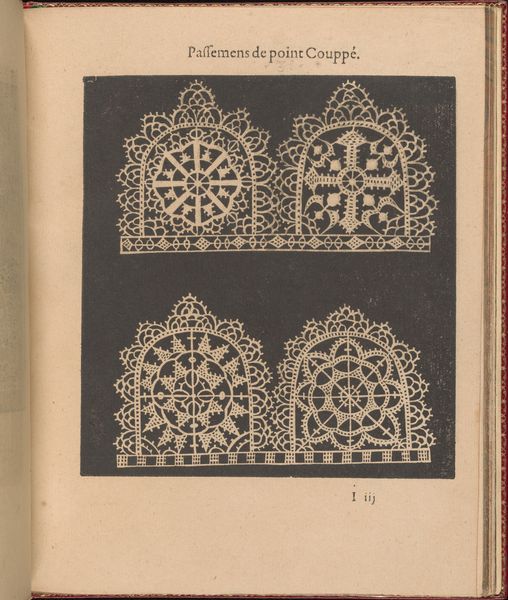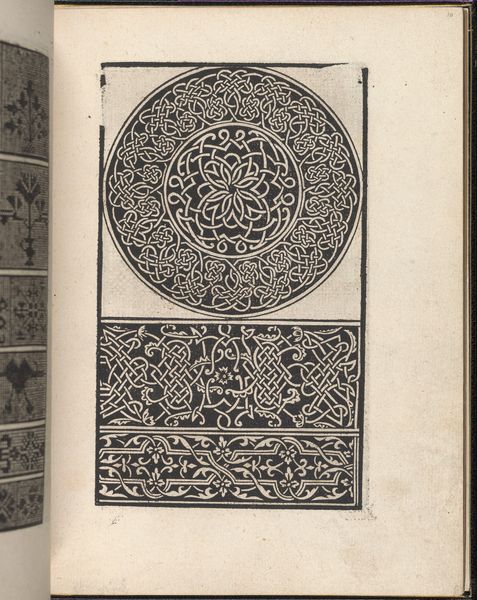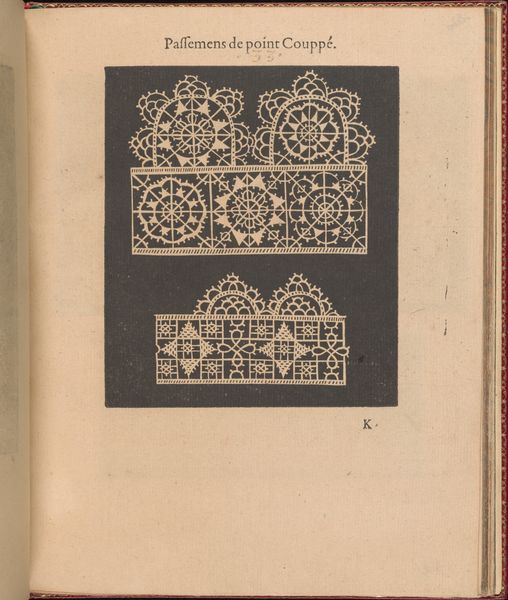
Les Singuliers et Nouveaux Portraicts... page 25 (recto) 1588
0:00
0:00
drawing, print, engraving
#
drawing
# print
#
11_renaissance
#
geometric
#
decorative-art
#
engraving
Dimensions: Overall: 8 1/16 x 6 5/16 in. (20.5 x 16 cm)
Copyright: Public Domain
Curator: Here we have a page from "Les Singuliers et Nouveaux Portraicts..." dating back to 1588. This engraving, a print on paper, showcases designs attributed to Federico de Vinciolo, and is part of the Metropolitan Museum of Art's collection. Editor: Wow, it's intricate, almost like peering into a geometric garden from a bygone era. The sharp contrast really grabs you. I'm curious; it looks like an instructional manual; did this artist mean for others to create these textiles? Curator: Exactly! Vinciolo was incredibly influential. This book served as a pattern book, providing designs for lacemakers. It reflected a shift in fashion, where lace moved from ecclesiastical uses to adorn everyday garments of the wealthy. Think of it as 16th-century DIY. Editor: I see! I get a sense of almost obsessive precision with the repetition of these motifs—grids of little florets and quirky stylized birds; there's such formality! Curator: That tension between organic and geometric is key. Consider the social status associated with lacemaking in the Renaissance. Lace was incredibly expensive, signifying wealth, leisure, and meticulous handcraft. The designs also speak to broader anxieties of the period, concerning emerging class structures and shifting social expectations. Editor: Mmh. Now I am also looking at how contemporary tastes intersect with this almost purely mathematical approach to ornamentation, and something a bit rebellious comes through, don't you think? The kind of beauty made from a rule-based system is intriguing. It gives order to chaos, in some sense. Curator: Absolutely, but it's important to recognize that "order" always reflects the biases of its time. Lace designs dictated what was acceptable within upper-class circles. Think about the colonial dynamics involved too, the sourcing of materials and labour, and how they reinforce historical power structures. Editor: Of course! So, beyond aesthetics, this is really about exploring complex histories woven into seemingly simple threads... Or engravings, in this case. It kind of blows my mind, actually. Thanks! Curator: A fruitful intersection of art and culture; exactly. Always worthwhile to keep exploring these ideas.
Comments
No comments
Be the first to comment and join the conversation on the ultimate creative platform.
